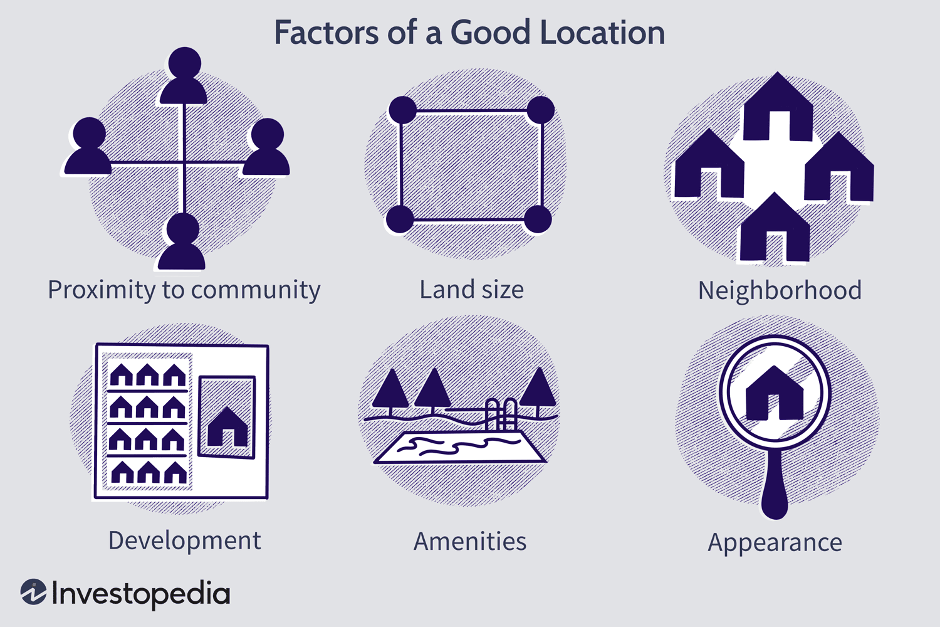Argument
The architecture of a structure is heavily influenced by its location, as is the quality of life that can be had within that building. It is common practice for urban environments to call for the construction of taller structures in order to house a greater population density; consequently, this may call for the use of various building materials, upgraded fire safety measures, and improved energy efficiency. People who live in suburban settings may be required to have greater open space, as well as landscaping and other outside amenities that combine to produce a pleasant environment for those who live inside (Rioux, 2020). In more rural locations, the emphasis may be placed on eco-friendliness and the use of natural construction materials designed to blend in with the surrounding environment.

It is possible for the setting of a structure to have a considerable influence on both the way it is designed and the experience of living there. When creating a building, an architect must take into account the local climate, as well as the location’s physical environment and cultural context. In addition, the infrastructure and urban design of the area can affect the design of the building, which in turn can have an effect on the quality of life of those who live in the building.

The dimensions and contours of the building, as well as the materials utilized in its construction, may be modified in response to the site’s topography. The site’s topography can also be used to decide the orientation of the building, which can help increase the amount of natural light and ventilation in the space. In addition, the location’s natural characteristics impact the building’s design, such as the incorporation of sunshades or other elements that allow the structure to make the most of the weather conditions.
The cultural context of the location is also an important factor in the design of the building. The style of architecture, the use of traditional materials, and the symbolism of the design can all be informed by the area’s cultural heritage. In addition, the design may also be influenced by local design trends or the architect’s aesthetic preferences.
The local infrastructure can also have an impact on the design of the building. For example, the type of transportation available in the area can influence the building’s layout and design. Additionally, the availability of services such as water, gas, and electricity can affect the design of the building.
Finally, the area’s overall urban design can influence the building’s design. The building may need to adhere to various zoning and building regulations, or it may need to fit into the existing urban context. Additionally, the design may need to reflect the area’s architectural style, or it may need to create a contrast to enhance the area.
All of these factors can have an impact on the design of the building and the quality of life experienced by its occupants. Therefore, the location of a building should be carefully considered when designing a building in order to create a successful design that enhances the quality of life of its occupants.
Counterargument
While the location of a building certainly impacts its design and the quality of living within it, other factors also play a role. The building project’s budget, the preferences of the people living within it, the area’s climate, and the materials’ availability all affect the design and quality of living. The designers must take all of these factors into account when creating a building that meets the needs of the people who will live in it.
Despite its importance in the creation of a building, the location of a building does not have a direct impact on its design and the quality of living within it. Location can influence the design of a building, for example, the need for insulation in cold climates or shade in hot climates (Gifford, 2019). However, the location does not necessarily dictate the design of a building. Instead, the building’s design is primarily determined by its purpose, the architect’s vision, and the client’s desires.
In addition, the location of a building does not necessarily determine the quality of living within it. The quality of living within a building is determined by the design of the space, the quality of the materials used, and the amenities provided. For example, a building in a wealthy neighborhood may contain high-end materials and luxurious amenities. However, if it has been poorly designed, it may still be an uncomfortable place to live. Conversely, a building in a poorer area may be well-designed and have quality materials and amenities, making it a comfortable and enjoyable place to live.
Furthermore, the location of a building does not necessarily determine the cost of living within it. The cost of living in a building is primarily determined by the cost of the materials used, the cost of the labor to construct it, and the cost of maintenance and upkeep. For example, a building located in an expensive neighborhood may have high construction costs due to land, materials, and labor costs. However, the cost of living in the building can still be affordable if the design is efficient and the maintenance costs are low.
Results
The location has a direct impact on the design of a building, as the size and shape of the building must be tailored to the land it occupies. In addition, the local climate and environment must be taken into account when selecting materials and designing the building’s systems.
The quality of living within a building is also affected by its location, as the surrounding natural environment and urban landscape can influence the amount of light, air, and noise that enters the building.
Proper planning and design can maximize the potential of a building’s location and mitigate any negative aspects of the environment, resulting in a more comfortable and enjoyable living experience.
Ultimately, it is clear that location is an essential factor to consider when designing a building, as it can directly impact the design of the building and the quality of living within it.
Comparative Analysis
The comparative analysis of these two arguments reveals that while the counterargument has some valid points, the argument is more likely to be accurate. The location of a building can have a significant impact on its design, as restrictions on the type of materials that can be used and the size of the building can be determined by its location. Furthermore, the location of a building can also influence the quality of living within it by providing access to amenities and other essential services. Therefore, it is likely that the location of a building does indeed have an impact on its design and the quality of living within it.
The expense of building supplies and labor is also affected by where a structure is located. The higher transportation and other costs involved with construction in a specific location are to blame for this. The amount of natural light entering a structure and air pollution are affected by its location. Because of this, it may be difficult for the occupants to feel at ease or maintain good health. One final factor that influences a property’s worth is its location, with some locations being more attractive than others. That a structure’s design and the experience of its occupants can be affected by its setting has thus been demonstrated by the preceding considerations.
Reference
Gifford, R. (2019). The consequences of living in high-rise buildings. Architectural science review, 50(1), 2–17.
Rioux, L. (2020). The well-being of aging people living in their own homes. Journal of Environmental Psychology, 25(2), 231–243.
 write
write